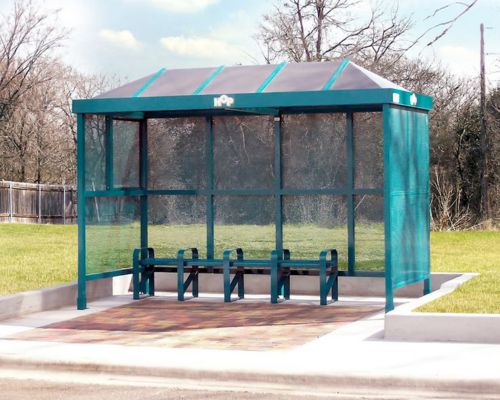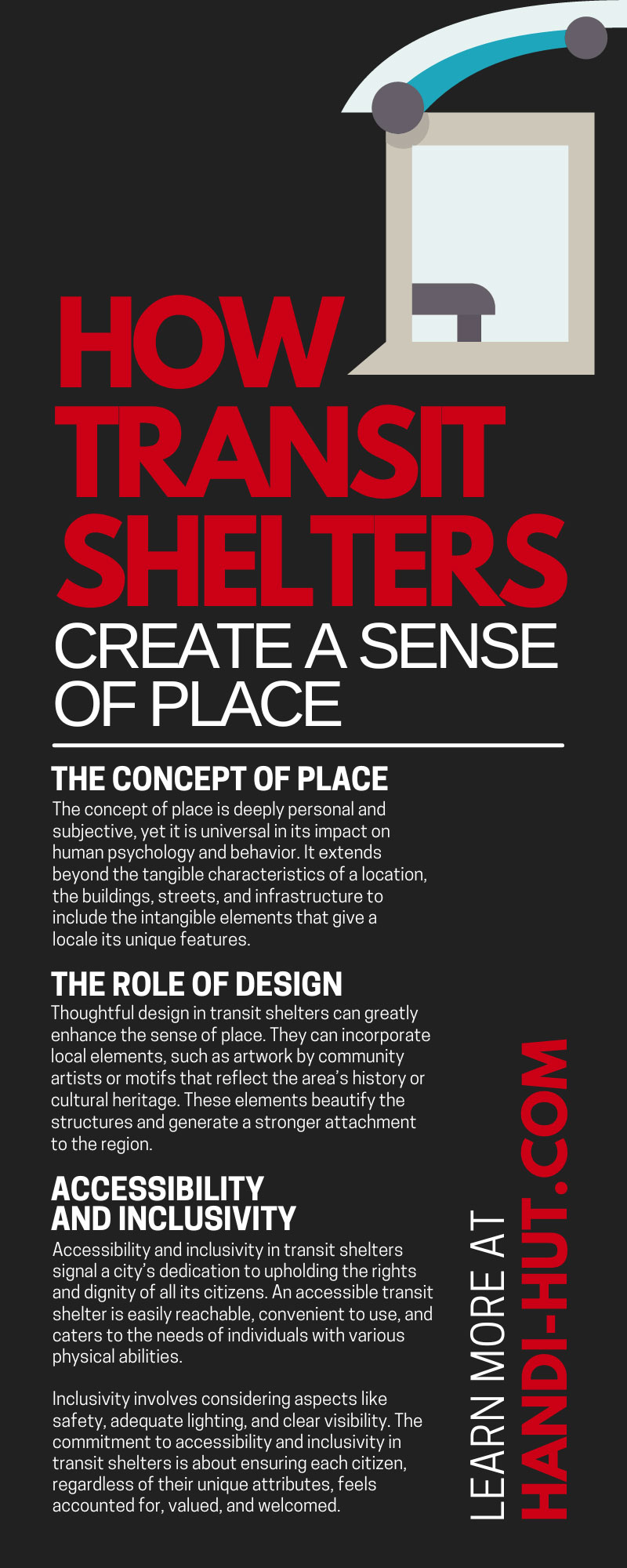
Transit shelters, structures that mark public transportation stops on streets and squares, play a remarkably profound role in shaping the perception and identity of urban surroundings. Beyond providing commuters a place to wait for public transportation, these structures communicate a community’s character, history, culture, and aspirations.
The design and aesthetics of a transit shelter can significantly influence how residents experience and interpret a city or town. Transit shelters are more than practical infrastructure; they are vital landmarks that foster a sense of place and community.
Understanding how transit shelters create a sense of place will ensure planners create stops that contribute to the narrative of urban community and belonging.
The Concept of Place
The concept of place is deeply personal and subjective, yet it is universal in its impact on human psychology and behavior. It extends beyond the tangible characteristics of a location, the buildings, streets, and infrastructure to include the intangible elements that give a locale its unique features.
Culture, history, social interactions, and personal experiences blend to create a sense of place. A transit shelter can evoke a strong sense of familiarity and comfort for daily commuters. Its design may reflect the local architectural style, its advertisements may echo the local culture, and its location allows people to associate it with personal memories and experiences.
The Role of Design
Thoughtful design in transit shelters can greatly enhance the sense of place. They can incorporate local elements, such as artwork by community artists or motifs that reflect the area’s history or cultural heritage. These elements beautify the structures and generate a stronger attachment to the region.
A shelter with seating arrangements designed in the local artisanal style can resonate with the residents’ artistic sensibilities, fostering a connection between the community and their physical environment. Incorporating sustainable materials or features for enhanced accessibility can reflect the community’s values and aspirations.
Accessibility and Inclusivity
Accessibility and inclusivity in transit shelters signal a city’s dedication to upholding the rights and dignity of all its citizens. An accessible transit shelter is easily reachable, convenient to use, and caters to the needs of individuals with various physical abilities.
Inclusivity involves considering aspects like safety, adequate lighting, and clear visibility. The commitment to accessibility and inclusivity in transit shelters is about ensuring each citizen, regardless of their unique attributes, feels accounted for, valued, and welcomed.
Lighting as a Mood Enhancer
Lighting plays a pivotal role in augmenting the mood of the transit shelter and the sense of place. Proper lighting can transform a transit shelter from a functional structure to a welcoming space that communicates warmth and security.
Creative and innovative lighting design can turn transit shelters into local art and culture focal points. Eco-friendly lighting solutions, such as LED lights or solar-powered systems, can align with a city’s sustainability goals, displaying a commitment to environmental responsibility.
Integration With the Surrounding Environment
The seamless integration of transit shelters with the surrounding environment is an essential element in creating a sense of place. This requires an architectural approach that respects and enhances the existing landscape rather than imposing upon it.
In an urban setting, this might involve designing a shelter that complements the architectural style of nearby buildings or incorporates elements of the city’s skyline. Using materials commonly found in the area, such as local stone or wood, can further establish a connective thread between the shelter and its location.
Modern Solutions
Prefabricated bus stop shelters are revolutionizing the way urban spaces continue to develop. These modern solutions are cost-effective and time-efficient, and they offer immense design flexibility, enabling cities to create shelters that reflect their unique character and aesthetic appeal.
The modular nature of these shelters allows for various configurations, sizes, and designs, from sleek and modern to rustic and traditional. This adaptability enables communities to select a design that aligns with their architectural style and community vibe.
Sustainability and Green Initiatives
Sustainability and green initiatives are increasingly integral to public transportation, especially in modern transit shelter design. These measures help reduce environmental impact and signal a city’s commitment to sustainable living and development.
One example of this is the incorporation of solar-powered lighting in shelters. By harnessing the abundant and renewable energy of the sun, these systems provide an eco-friendly solution for illuminating the shelters, substantially reducing energy consumption and associated greenhouse gas emissions.
Technology and Digital Integration
The integration of technology into transit shelters is proof of a city’s progressive and forward-thinking principles. Digital signage plays a vital role in enhancing passenger experience. These signs can display real-time information about bus schedules, delays, or changes in bus routes, making commuting more predictable and less stressful.
Wi-Fi connectivity in transit shelters is another valuable addition. With the world becoming increasingly connected, providing free Wi-Fi access can enhance the experience for passengers, allowing them to use their waiting time productively or simply enjoy online entertainment.
Community Participation
Community participation in the design and maintenance of transit shelters is a potent tool for enhancing the sense of place and instilling a feeling of pride and ownership among residents. The engagement of local communities can take various forms, ranging from collaborative design processes to citizen-led maintenance initiatives.
Public consultations and participatory design workshops can solicit input from residents regarding the design of new shelters. This could involve decisions about a shelter’s layout, aesthetics, or special features. Residents can contribute unique insights and ideas by participating in the design process, ensuring the final design reflects and caters to their needs and aspirations.
The Transit Shelter as a Microcosm
A transit shelter is more than just a place to wait for a bus. It’s a symbol of the city in which it resides, reflecting the unique cultural, historical, and societal nuances. Each design element, from the architecture to the choice of materials, subtly communicates the city’s identity and heritage.
The transit shelter serves as a microcosm, providing a snapshot of the city’s character, beliefs, and aspirations in its design and functionality. It’s a testament to the city’s identity, subtly narrating its story to every commuter or passerby.
Transit shelters create a sense of place because they provide more than just shelter—they give residents a sense of belonging that is integral to the urban experience. As cities continue to evolve and grow, innovating and redesigning these shelters will be critical to enhancing urban life, making them spaces of interaction and a demonstration of the city’s spirit.

